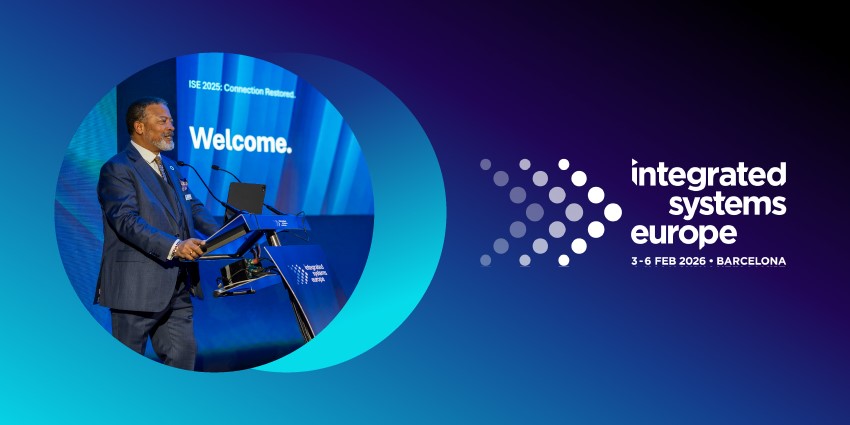Think Slackbot is still the only Slack AI feature worth exploring? Think again. Slack has been upgrading the AI features in its platform for some time now, introducing new features and capabilities specially designed for enterprise teams.
In April 2024, the “Slack AI” toolkit became available for all paying Slack users (not just Enterprise-level customers), introducing Gen AI capabilities to companies for a bolt-on price of $10 per month, per user. This toolkit offers access to bots that can summarize conversations, simplify the search for valuable information, and create content.
Plus, Salesforce recently integrated Agentforce into the Slack platform, empowering companies to access and build a range of agentic AI solutions for specific tasks.
Here’s everything you need to know about Slack AI today.
What is Slack AI? The Basics
The Slack AI toolkit bundles a series of generative AI features into a secure, intuitive solution for productive work. It includes guided, one-click solutions such as channel recaps, AI-powered personalized search, thread summaries, and content generation.
It offers similar features to solutions like Microsoft’s Copilot for MS Teams or Google’s Gemini for Workspace. Slack AI isn’t just a new name for the basic “Slackbot”, which users can converse with inside of Slack, asking questions about data or tasks. The suite of tools includes features for intelligent daily or weekly recaps, conversation summaries, and optimized search.
According to Slack and Salesforce, business users save an average of around 97 minutes each week just by using Slack AI to boost productivity and efficiency.
As mentioned above, this solution is now available to all paying users. It used to be open only to Enterprise Slack customers, but now anyone can add the solution to their plan for a price of $10 per month, per user.
What Can Slack AI Actually Do?
Slack AI, like most AI-powered tools for unified communication and collaboration apps, is constantly evolving. The core features are designed to help business users spend less time digging through messages and more time on valuable tasks. For instance, you can:
Summarize Threads and Channels Instantly
One of the major features of Slack AI is “channel recaps.” This feature allows users to generate key highlights from any Slack channel with a single click. The AI bot will give you a quick rundown of everything happening in your channel. Plus, you can filter through information by focusing on unread messages, specific dates, and more.
While recaps reduce the work of digging through channels, thread summaries give you the key points from a conversation in a click. You can instantly request summaries that help you amplify the data from conversations that are most important to you. You can even create customizable, automated recaps for any channel you want to monitor.
Ask Slackbot Questions
Just as you can “speak” to tools like Microsoft Copilot in Teams and other Microsoft apps, you can also converse with your Slack bot. You can ask your bot questions about a conversation using natural prompts, and the bot will even cite its sources for you.
This could be ideal if you’re looking for a quick way to get a run-down on the latest sales numbers reported by your team or track down information about a recent meeting. Although, from what I can tell, you can’t ask Slack to generate responses to messages, at least not yet.
Simplify and Personalize Search
If you’ve ever struggled with finding the information you need in a river of Slack threads and channels, Slack AI has the answer. Just click on the AI diamond button within the app, and you can ask Slack anything you like.
For instance, you might ask, “What’s the latest on the Q3 product launch?” Slack AI will return a clear answer based on messages, files, and content from your workspace. It’s powered by large language models (LLMs) but is fully aware of Slack’s context.
Implement Custom AI Tools
Notably, artificial intelligence isn’t just built natively into the Slack platform. The tech vendor says its customers already use over 13,400 AI custom internal Slack apps within the platform. Plus, the company’s partner ecosystem is designing and offering its own AI-driven Slack apps.
Numerous Slack integrations can enhance your AI-powered workflows. For instance, teams can connect their platform with Notion to view AI summaries when links are shared in Slack. You can also use PagerDuty Advance in Slack to surface insights, address incident response requirements, and access suggested remediation paths.
How Slack AI Works Behind the Scenes
You don’t need to be a machine learning expert to use Slack AI, but it’s still worth understanding a bit about how it works. Unlike standalone AI tools, Slack AI is built directly into the platform’s infrastructure using a system called retrieval-augmented generation (RAG).
This means that when you ask a question or request a summary, Slack pulls relevant messages, documents, and context from your workspace and uses a large language model to generate a response based on that information.
Another bonus for businesses is that Slack and Salesforce emphasizing security and privacy. Notably, Slack says its AI solutions run on its existing trusted infrastructure, adhering to the same consistent compliance standards. The company also promises not to share any data you input into the system with large language model providers and doesn’t use your data to train its own bots.
The AI features respect your workspace’s existing access permissions, so agents and users can only see what they’re allowed to. The outputs are also ephemeral, which means they’re generated on demand and not stored or reused. This is all backed by Slack’s broader Einstein Trust Layer (via Salesforce), which includes auditing and data masking tools for enterprise use cases.
Real-World Impact: How Teams Are Using Slack AI
Since its launch, Slack AI has emerged as a valuable resource for countless companies, streamlining collaboration, knowledge-sharing and data management. For instance, at Wayfair, engineers dealing with time-sensitive vendor contracts utilized Slack AI’s search answers to quickly retrieve the latest information, reducing the need to sift through extensive message histories.
Beyond Better Foods uses Slack AI’s enhanced search features to fast-track customer service and optimize logistics workflows. The company is also using recaps to track selected channel conversations with simple daily digests.
Organizations like ProService Hawaii are even using Slack AI to help upskill employees and improve connections between distributed team members.
Slack AI and Agentforce: The New Frontier
While Slack AI enhances individual productivity, Agentforce from Salesforce introduces a brand-new opportunity; the ability to create intelligent agents that function as collaborative teammates. Teams can now use the agentic AI capabilities of Agentforce to build digital assistants within Slack, fine-tuned to various roles, such as:
- Sales Agent: Assists in qualifying leads, preparing proposals, and providing real-time customer insights.
- IT Support Agent: Handles routine IT requests, troubleshoots common issues, and escalates complex problems to human technicians.
- HR Onboarding Agent: Guides new hires through the onboarding process, answers frequently asked questions, and schedules training sessions.
These agents are integrated with the Salesforce ecosystem and the Data Cloud, allowing them to analyze various data sources when answering questions and proactively managing tasks. They can provide status updates on cases, draft messages, design action plans, and more.
Plus, admins have the flexibility to configure agents, set permissions, and define the scope of their actions, ensuring they align with company policies and objectives. Companies can even integrate their agents with other third-party tools, so they can access and act on data across platforms.
Just like all Slack AI tools, Agentforce agents operate according to strict access controls, so businesses can control exactly what data their digital assistants can use.
How Slack AI Stands Out for Enterprise Teams
Slack isn’t the first or only example of a company embedding cutting-edge AI into productivity tools. It’s not even the only company experimenting with Agentic AI capabilities. Both Google and Microsoft offer companies access to solutions that allow them to build their AI agents.
Zoom is upgrading its “AI Companion” solution too, allowing businesses to create custom versions of the bot with specific skills and capabilities.
Still, Slack does give businesses an intuitive, cost-effective way to experiment with AI. Plus, the Slack AI add-on plan is relatively affordable, particularly for smaller companies. Additionally, with Agentforce, Slack allows businesses to experiment with some of the most flexible agentic AI solutions.
Plus, while Google and Microsoft’s tools are mostly focused on specific ecosystems (like Microsoft Teams and Google Workspace), Slack makes it easy to infuse AI with a wide range of third-party tools and productivity apps.
What’s Next for Slack AI?
Slack, like many of its competitors, has been quite vocal about its AI ambitions for a while, experimenting with tools like Slack GPT for Canvas and AI-powered workflow builders.
For instance, the Slack workflow builder now allows users to add generative AI prompts as a “step” into their workflows. Plus, companies can now access Agentforce within Slack, aligning even more of their data and workflows.
Going forward, Slack will continue to build on its AI ecosystem with Salesforce’s support. We’ll see more advanced workflow automation capabilities, expanded language support, and even a range of new pre-built agents for supply chain management, human resources, product engineering, and more.
A New Era of Intelligent Collaboration
Slack’s evolving AI toolkit has a lot to offer today’s companies. It’s great whether you’re looking for an easy way to streamline tasks and knowledge sharing, or you’re ready to add your own AI-powered agents to growing teams. Working together, Slack and Salesforce are on track to deliver a brand-new era of intelligent collaboration to businesses across industries.
Plus, Slack is continuing to partner with various third-party vendors. Soon, it will provide businesses with even more ways to automate and simplify tasks.
Want to learn more about everything Slack has to offer? Check out our ultimate guide to Slack here, and stay tuned for all the latest news about Slack’s AI solutions.







